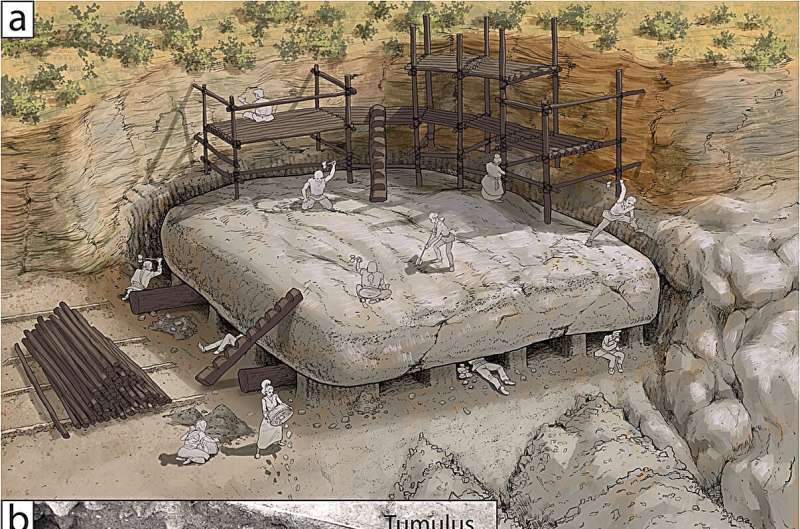
The capstone C-5 in Cerro de la Cruz Quarry #2. Drawing: Moisés Bellilty under guidance of José Antonio Lozano Rodríguez and Leonardo García Sanjuán.
A team of archaeologists, geologists and historians affiliated with several institutions in Spain has found that the Menga dolmen represents one of the greatest engineering feats of the Neolithic. In their study, published in Scientific Reports, the group used new technology to learn more about the stone that was used to create the ancient burial site and to explore how wood and rope would have been used in its construction.
The Menga dolmen is an ancient burial mound located near Antequera, Málaga, Spain. It has been dated to approximately 5,700 years ago and is one of the largest known megalithic structures to be built in Europe. It was built into the top of a hill using large stones, the largest of which weigh more than 100 tons. In this new effort, the research team took a closer look at the composition of the stones used to build the burial mound, where they came from and how they were transported.
To learn more about the makeup of the stones, the research team used petrographic and stratigraphic analysis techniques, which showed that the stones were mostly calcarenites, a type of detrital sedimentary rock. In the modern age, they are known as soft stones due to their fragility. According to the researchers, such a soft type of rock would have been difficult to transport without causing damage—a finding that suggests a certain level of engineering sophistication.
Read the rest of this article...
No comments:
Post a Comment
Note: Only a member of this blog may post a comment.